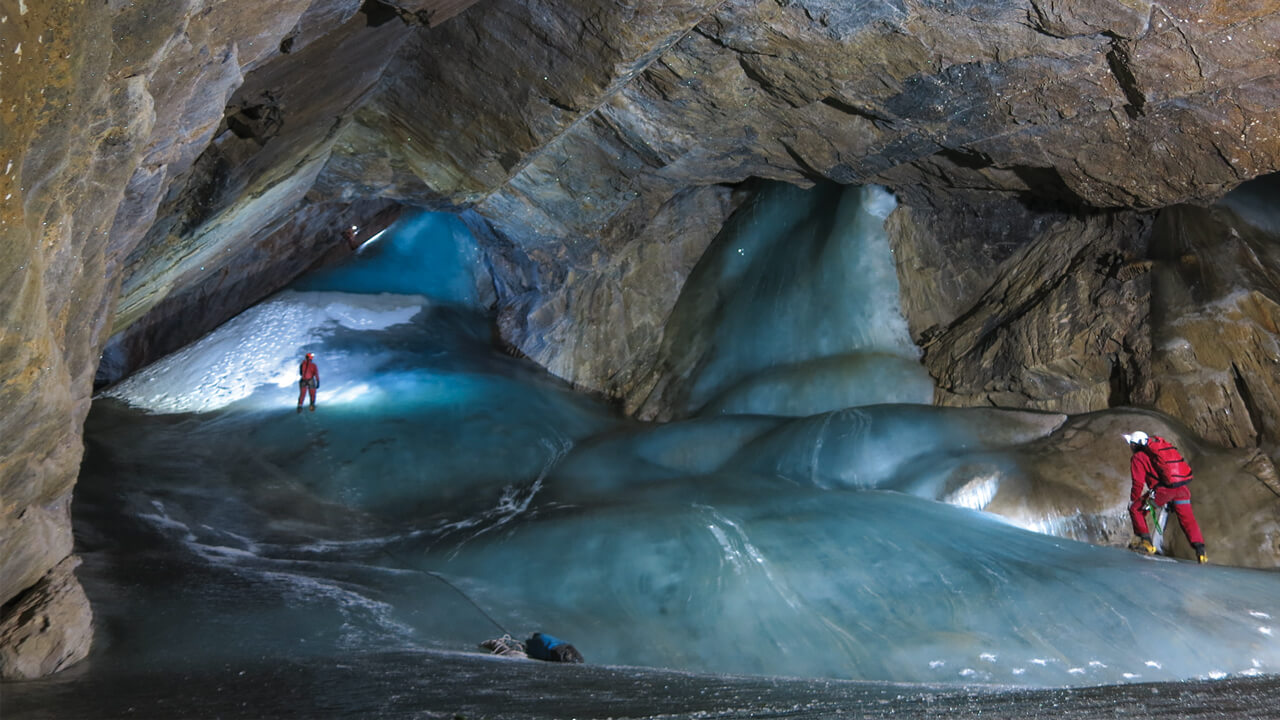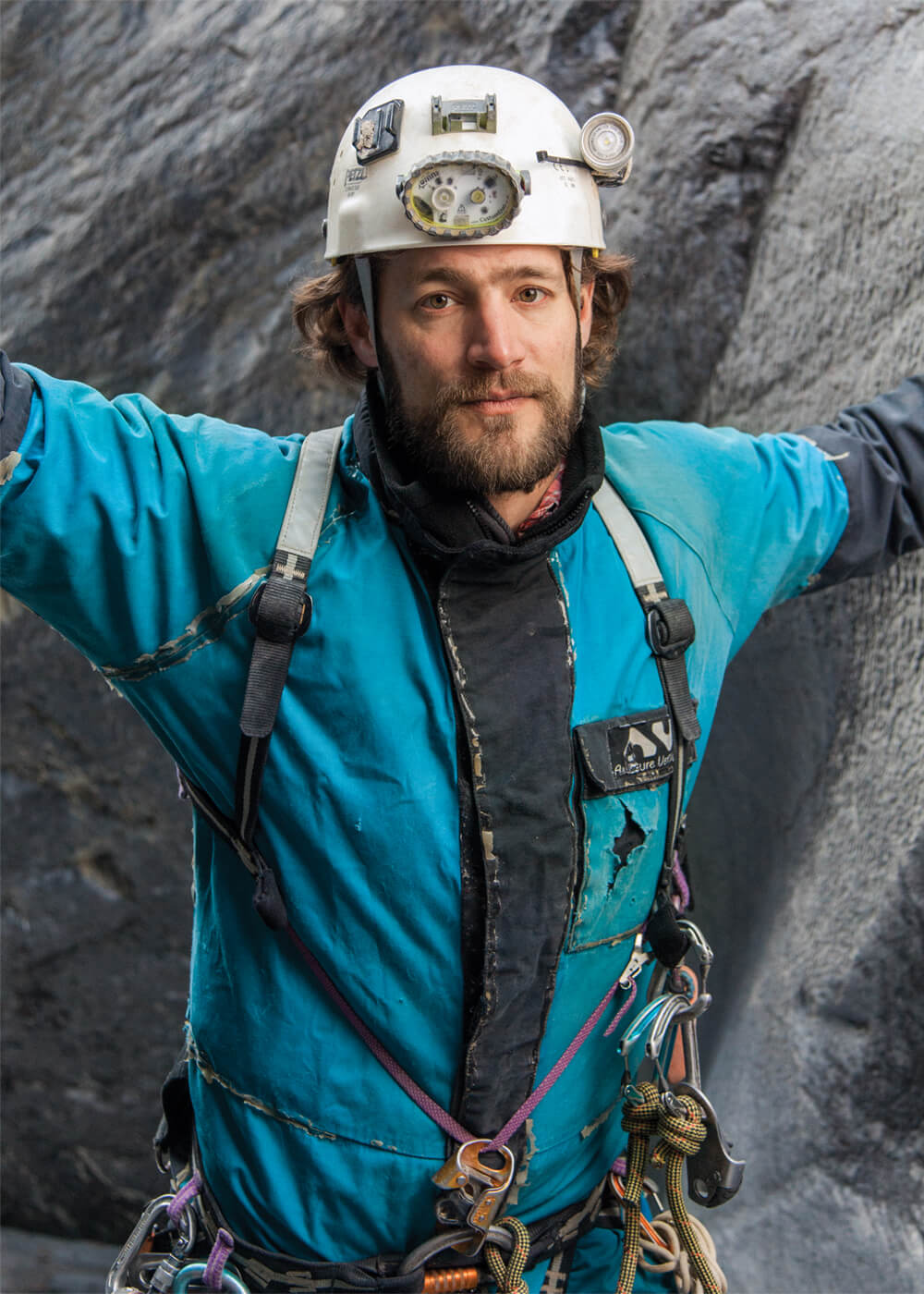Vieira free-climbs six metres up to a wide ledge where water from the falls collects in a shallow pool before spilling over the lip. Though his path takes him straight through the freezing spray, the initial leg of the climb is the easy part, with grooved handholds beaten into the marble by crashing water. Above the first ledge, the wall beside the falls is smooth schist, with few grips big enough to provide a solid hold, especially for a climber wearing dive gloves and rubber boots. Vieira instead opts to ascend directly in the path of the waterfall. The rush of water makes it impossible to see anything, even with his dive mask on, and fighting uphill against it takes incredible strength and endurance. Vieira picks his way by feel, carefully locating one hold, then the next, pausing at regular intervals to drive anchors into the rock with a hammer drill. Setting each takes only a matter of seconds but still involves clinging to the side of a slick marble cliff face with one hand, the waterfall beating down on his head and shoulders, while he drills into solid rock with the other — gruelling, teeth-chattering work.
After seven more brutal metres, Vieira pulls himself up onto a second ledge. This one is smaller, a metre and a half deep at its largest point, but it sits slightly to one side of the falls and provides some relief from the water. On that tiny patch of what passes for dry ground, Vieira reorganizes his ropes and sets another anchor. Then he presses on, up the final nine-metre climb. At its lip the waterfall is wall-to-wall — the full volume of meltwater running off the East Tupper Glacier concentrated into a single stream a metre and a half wide. The handholds here are so small that Vieira has to hang from the tips of his fingers. He sets a skyhook — a piece of metal he can attach to the wall and rest his weight on — giving his hands a break while he plans his next move. Free-climbing the last few feet is impossible: the falls would blow him off the wall. Vieira decides to use a small rope ladder, called an etrier, to give his boots a reliable leverage point. He wrestles it out of his pack, clips it to the skyhook, positions himself on it, and then drives up into the dark crush of water. The final push is ugly, an elephant seal floundering its way up the beach. Eventually, Vieira squirms belly first onto the top of the falls and rises to his feet. His first steps on ground no human foot has ever touched are a jig.
Chasing experiences like that first glorious moment atop the falls, Nick Vieira has sacrificed comfort, security, relationships, possessions, warm meals and damn near every other thing a person can wrap themselves up in and call a normal life. Any money he earns he pours into his expeditions. He’s slept in his Jeep through five Canadian winters, survived on expired army rations and caught falling rock with the top of his head. But he’s also rafted across buried lakes, mapped vast expanses of subterranean sand dunes and crawled underneath four continents. In just seven years, he’s gone from a first-time caver to one of the best in the world. A transformation like that is anything but normal.















